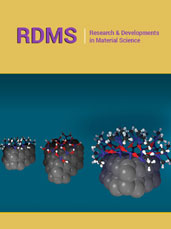- Submissions

Full Text
Open Access Biostatistics & Bioinformatics
Bridging Personalized and Population Evidence in Precision Oncology: Integration of N-of-1 Trials and Matched Cohort Analysis
Veronika Lindberg1* and Jan P.A. Baak MD, PhD, FICP, FRCPath, FIAChon, DrHC(Antwerp)2
1Lintech AS, Kristiansand, Norway
2Professor of Pathology, Stavanger University Hospital, Norway
*Corresponding author: Veronika Lindberg, Stavanger University Hospital, Gerd-Ragna Bloch Thorsens gate 8, 4011 Stavanger, Norway
Submitted: January 29, 2025; Published: February 07, 2025

ISSN: 2578-0247 Volume4 Issue 1
Abstract
This paper presents a methodological framework for evaluating individualized cancer treatments within the context of precision oncology. The framework integrates N-of-1 trials with matched cohort analysis. N-of-1 trials optimize drug selection and dosing based on individual patient characteristics, while matched cohort analysis, using propensity score matching, enables robust evaluation of treatment effects at both the individual and population levels. This reduces selection bias and facilitates meaningful comparisons between treatment cohorts. This integrated strategy bridges personalized care and population-level evidence, offering a scalable, real-world model for advancing individualized cancer therapies. While this approach is rooted in Western medical research methodology, it shares fundamental similarities with the Traditional Chinese Medicine (TCM) principle of “syndrome differentiation and treatment.” This alignment makes it particularly suitable for evaluating both Western and TCM approaches, either independently or in combination. The framework allows for the integration of personalized approaches within a rigorous research methodology, bridging individual patient care with population-level evidence (Figure 1).
Figure 1:Bridging individual patient care with population-level evidence.

Keywords:Individualized treatment; N-of-1 trials; Precision oncology; Propensity score matching; Observational study; Personalized medicine; Cancer treatment; Traditional Chinese Medicine (TCM)
Introduction
Precision oncology aims to tailor treatment to the individual characteristics of each patient, maximizing efficacy and minimizing adverse effects. This approach aligns with the core principle of precision oncology: delivering “the right drug(s) to the right patient at the right time”. A key challenge in this endeavor is determining the optimal drug doses for each patient, especially with novel combination therapies. Traditional dosing methods, based on flat doses or body surface area, often fail to account for individual patient variability in drug tolerance, influenced by factors like age, gender, race, comorbidities and metabolism. N-of-1 trials, also known as single-case design studies, offer a potential solution by focusing on individual patient responses. In this design, a single patient receives different treatments or a placebo in multiple crossover periods, allowing for direct comparison of treatment effects within the same individual. This approach minimizes the influence of inter-individual variability, a major challenge in traditional clinical trials.
Recent advances in precision oncology have demonstrated the feasibility of personalized treatment approaches. Notable examples include the I-PREDICT Study [1], which successfully implemented multi-drug combinations for advanced cancers, and the WINTHER Trial [2], which utilized genomics and transcriptomics to guide therapeutic decisions. These studies, along with large-scale retrospective analyses like the Taiwan National Health Insurance Research Database study [3], provide evidence that individualized approaches can be successfully implemented and evaluated at scale. Furthermore, these methodologies align well with traditional medical systems like TCM, which have long emphasized personalized treatment approaches.
The concept of “individualized drug choice and dosing determined by starting at reduced doses and using intra patient dose escalation” aligns with the principles of N-of-1 trials. This approach involves adjusting the drug dose within the same patient based on their observed response and tolerance, similar to the concept of multiple crossover periods in N-of-1 trials. Starting at reduced doses minimizes the risk of adverse events while intra patient dose escalation allows for gradual increase in the amount of medication to achieve the desired effect.
While N-of-1 trials provide valuable insights into individual treatment responses, they may lack generalizability to the broader population. To address this limitation, we propose integrating N-of- 1 trials with a matched cohort analysis. This approach allows for the aggregation of multiple individual treatment experiences into a cohesive group analysis, enabling comparisons with a control group receiving standard care. This integration of N-of-1 trials with matched cohort analysis is particularly relevant in precision oncology, where N-of-1 trials have gained attention for their ability to accelerate cancer drug development and advance personalized medicine. As Gouda et al. [4] demonstrate, these trials show promise in bridging the gap between traditional drug development approaches and the increasing need for personalized therapies. Our proposed framework extends this concept by incorporating matched cohort analysis, enabling evaluation of treatment outcomes at both individual and population levels.
Methodological Framework
N-of-1 trials (individualized treatments)
Patient selection: Patients with a confirmed diagnosis of cancer who meet specific inclusion/exclusion criteria are eligible for the study.
Individualized treatment regimen: Each patient receives a personalized treatment regimen based on their unique characteristics, including tumor genomics, disease stage, comorbidities, and treatment goals. This approach shares similarities with N-of-1 trials and individualized dosing strategies, as it prioritizes personalized treatment and dose optimization.
Drug choice and dose optimization: To optimize both drug selection and dosing, N-of-1 trials begin with conservative doses to minimize adverse events. Dosage is then carefully escalated based on the individual patient’s response, balancing efficacy with safety. This precision-driven approach to dose optimization offers a pathway toward safer and more effective individualized cancer therapy.
Monitoring and evaluation: Patients are closely monitored for treatment response, tolerance, and adverse events. Treatment adjustments are made as needed based on individual patient responses.
Matched cohort analysis
Propensity score matching: A control group is created by matching patients receiving individualized treatment with those receiving standard care alone, based on observed characteristics such as age, gender, tumor stage, histological type, performance status, and previous treatments.
Matching algorithm: A 1:1 greedy algorithm or other suitable matching method is used to ensure that patients in both groups share similar baseline characteristics and prognostic factors.
Outcome assessment: Primary and secondary outcomes are clearly defined and assessed in both groups. Examples include overall survival, progression-free survival, quality of life, and safety.
Integration of N-of-1 trials and matched cohort analysis
Data aggregation: Data from individual N-of-1 trials are aggregated to provide an overall picture of the effectiveness of individualized treatment.
Group comparison: The aggregated data from N-of-1 trials are compared with the outcomes of the matched cohort, enabling an evaluation of treatment effectiveness at both individual and group levels. Table 1 illustrates the integrated methodological framework, showing the flow of the study design and the relationship between N-of-1 trials and matched cohort analysis.
Table 1:Study design integrating N-of-1 trials (individualized treatments) with a matched cohort analysis.

Discussion
This integrated methodological framework offers several advantages for evaluating individualized treatment in cancer
Personalized treatment
The N-of-1 trial design allows for personalized treatment optimization, tailoring regimens to each patient’s unique needs and responses.
Rigorous comparison
The matched cohort analysis provides a robust comparative framework, minimizing the influence of confounding factors and enabling meaningful comparisons between individualized treatment and standard care.
Bridging the gap
This approach bridges the gap between personalized medicine and population-level evidence, allowing for the evaluation of both individual and group-level treatment effects.
Conclusion
The integration of N-of-1 trials and matched cohort analysis provides a promising methodological framework for evaluating individualized treatment in cancer. This approach addresses the challenges of evaluating personalized therapies while maintaining a rigorous comparative framework. By combining the strengths of both designs, this integrated approach has the potential to generate valuable evidence for the effectiveness of individualized treatment in a real-world setting, contributing to the advancement of precision oncology in cancer care.
References
- Sicklick JK, Kato S, Okamura R, Schwaederle M, Hahn ME, et al. (2019) Molecular profiling of cancer patients enables personalized combination therapy: the I-PREDICT study. Nat Med 25(5): 744-750.
- Rodon J, Soria JC, Berger R, Miller WH, Rubin E, et al. (2019) Genomic and transcriptomic profiling expands precision cancer medicine: the WINTHER trial. Nat Med 25(5): 751-758.
- Lin TH, Chen SI, Su YC, Lin MC, Lin HJ, et al. (2019) Conventional western treatment combined with Chinese herbal medicine alleviates the progressive risk of lung cancer in patients with chronic obstructive pulmonary disease: a nationwide retrospective cohort study. Front Pharmacol 10: 987.
- Gouda MA, Buschhorn L, Schneeweiss A, Wahida A, Subbiah V (2023) N-of-1 trials in cancer drug development. Cancer Discov 13(6): 1301-1309.
© 2025 Veronika Lindberg. This is an open access article distributed under the terms of the Creative Commons Attribution License , which permits unrestricted use, distribution, and build upon your work non-commercially.
 a Creative Commons Attribution 4.0 International License. Based on a work at www.crimsonpublishers.com.
Best viewed in
a Creative Commons Attribution 4.0 International License. Based on a work at www.crimsonpublishers.com.
Best viewed in 







.jpg)






























 Editorial Board Registrations
Editorial Board Registrations Submit your Article
Submit your Article Refer a Friend
Refer a Friend Advertise With Us
Advertise With Us
.jpg)






.jpg)














.bmp)
.jpg)
.png)
.jpg)










.jpg)






.png)

.png)



.png)






